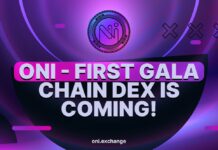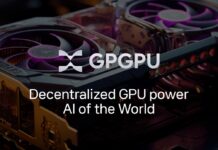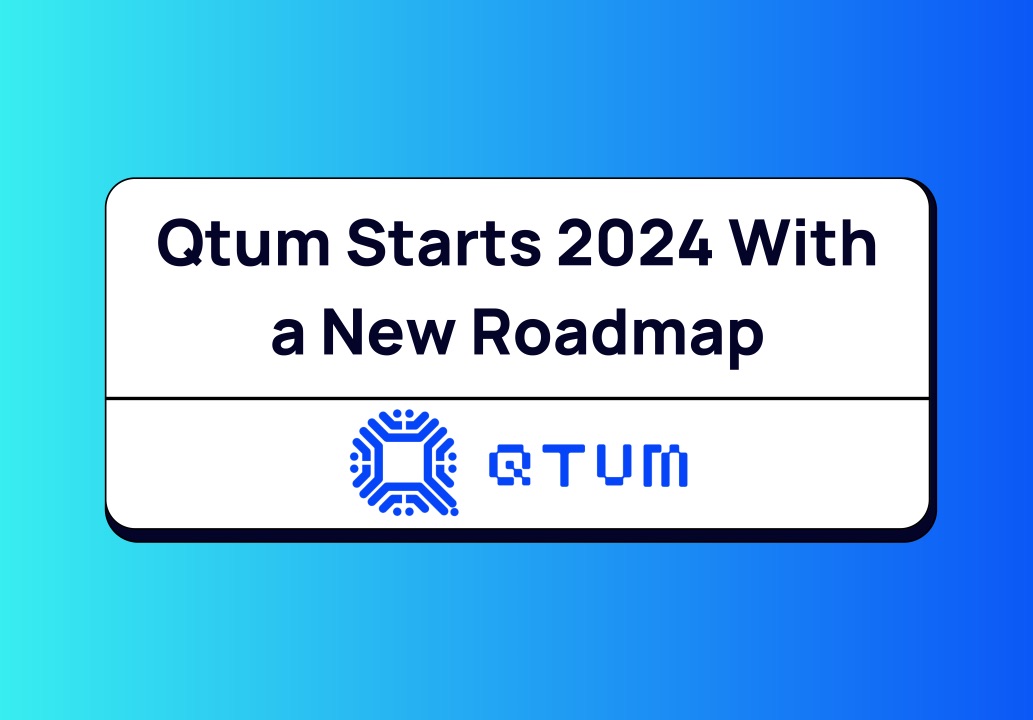The new Qtum roadmap for 2024 will pioneer Qtum’s first USDC token swaps with a token bridge, support for Bitcoin Ordinals, and upstream support to Qtum Core. These new features are likely to open the DeFi floodgates, significantly increase chain volume, and attract developers.
Nearly one decade ago, Qtum began its journey to merge the advantages of the two biggest blockchains, Bitcoin and Ethereum. Today, Qtum, an open-source blockchain platform, offers robust tools for building and deploying decentralized applications while ensuring high-quality security using the energy-efficient, proof-of-stake consensus model.
We can attribute the emergence of Qtum to the increasing need for efficient and reliable scaling solutions in 2017. With the emergence of blockchain technologies and subsequent mass adoption, scaling became an issue for layer1 chains. Congestion on Ethereum was placing extra pressure on transaction fees and performance. Transactions on Bitcoin were taking hours to complete, and if one lacked the patience to wait, they would have to meet hefty gas fees even for measly transactions.
Qtum rose around this time by enabling Bitcoin’s UTXO model to run smoothly alongside the Ethereum Virtual Machine to bring out high performance, low transaction fees, and universal interoperability at the height of the scalability debate. This unique approach by the Qtum team enabled it to benefit from the security features and stability of Bitcoin and, at the same time, open up functionality for Ethereum smart contracts.
According to Forbes, the global blockchain industry is worth $1.7 trillion dollars and is projected to record over $19 billion in spending by the end of 2024. Qtum aims to serve the multi-trillion market and open more opportunities for developers, builders, businesses, entrepreneurs and corporates who create global solutions by leveraging the blockchain.
In its 2024 expansion plan, Qtum is implementing the BRC-20 token standard onto its chain, introducing Ordinals, bridging solutions, and upstream developments from Bitcoin and Ethereum on its mainnet in a bid to improve scalability, interoperability and the co-existence of Bitcoin and Ethereum’s best features.
Qtum’s Robust Scalability Features
Integrating Segregated Witness (SegWit)
Qtum integrated the Segregated Witness (SegWit) protocol on its chain to boost efficiency, performance, and security. First introduced into Bitcoin, SegWit improves block space usage by separating transaction signatures from on-chain transaction data.
Integrating SegWit enabled Qtum to increase the number of transactions per block. Thereby significantly improving speed and scalability on the blockchain. Besides, SegWit has security-enhancing features which are an advantage to the Qtum blockchain.
Qtum also increased its throughput to a 32-second block target, which is faster than Litecoin or Bitcoin while remaining completely decentralized.
Onchain scaling with EVM
By leveraging the Ethereum Virtual Machine (EVM), Qtum achieved large block sizes of up to 8,000 kilobytes from 2,000 Kilobytes every 32 seconds. This enables the blockchain to process more transactions on each block and still maintain high-quality security levels and optimum decentralization. The larger the size of the block, the more transactions that Qtum can process, the faster the transaction times, and the lower the gas fees. This is a perfect example of how the EVM account-based model can co-exist and run smoothly with Bitcoin’s UTXO model.
To solve the dangers of large block sizes on proof-of-stake chains, Qtum ingeniously implemented a modified PoS consensus to optimize the nodes and protect the network from spam attacks. This had the benefit of eliminating bottlenecks and preventing any lags on the network.
L2 technology and microtransactions
The blockchain embraced the value of microtransactions and took steps to be ready for a layer-2 transactions technology. This will enable Qtum to run a Layer-2 technology network similar to Bitcoin’s Lightning Network. This new network would allow for micro-transactions on Qtum to be possible, made in real-time, and charged zero gas fees. As you can see, Qtum has already taken the necessary steps to become Bitcoin Lightning Network Ready.
Microtransactions are particularly valuable for use cases across digital marketplaces, gaming, and crypto faucets. These use cases rely on hundreds of thousands of frequent but small transactions,
Upcoming Changes in the Qtum 2024 Roadmap
Over the years, Qtum has made significant strides to improve the efficiency and reliability of its network. Some of these upgrades have reduced transaction times, increased performance, improved throughput, introduced revolutionary fee management models, pioneered new scaling features that adapt to changing blockchain requirements, and introduced DGP community upgrades. In 2024, Qtum is going a step further by introducing several key upgrades by the end of this year.
Qtum is Implementing BRC-20 Token Standard on its Chain
Qtum’s support for the Ethereum ecosystem has made it possible for the blockchain to support existing Ethereum token standards, ERC-1155 and ERC-721. Furthermore, the development team has continued to improve the functionality around these token standards to boost the performance of all smart contracts going through Qtum.
Earlier, we mentioned how the blockchain has managed to execute the UTXO model on Bitcoin alongside the Ethereum Virtual Machine. There it is. This model enables Qtum to support every update taking place across both chains. Hence, Qtum automatically has support for Bitcoin Ordinals since it’s already implemented Taproot, Bitcoin’s update that gave room for Inscriptions and Ordinals.
To expand upon this in 2024, the Qtum team is building a set of tools to support robust implementation of Ordinals on its chain. In the meantime, watch the space since the team has promised to provide additional functionality and incentives that are not possible with Bitcoin.
Qtum Bridge and USDC
Qtum 2024 roadmap has promised to be infrastructure-ready for builders who would want to create and merge utilities across Web3. The development team is already building bridge solutions to aid the transfer of digital tokens between Ethereum and Qtum. This will open up new possibilities for the open-source platform. The team is setting up USDC contracts to support the wrapping of USDC on the Qtum blockchain.
The feature will also enable the conversion of wrapped USDC to its native form whenever one wants to. Since its inception, Qtum has had a large gap for not offering a native stablecoin liquidity pool. By introducing new bridging solutions, the platform aims to provide this functionally and even support Metamask Snaps (https://metamask.io/snaps/).
Support for stablecoins will also open new opportunities for Qtum NFTs, which have been available for a while but haven’t managed to gain traction. The existence of BRC-20 on the platform means that ERC NFTs and Bitcoin Ordinals will be able to co-exist for the first time on a native blockchain without the need for a layer2 solution or some form of bridge or atomic swap.
Conclusion
Countless updates will take place on Qtum Core by merging the most robust updates coming from Bitcoin and Ethereum. Qtum Core is the blockchain’s base layer that incorporates an improved Bitcoin Network and a modified proof-of-stake consensus. By leveraging the advantages of the world’s leading chains, Qtum has a goal of taking scalability and interoperability to the next level.
























